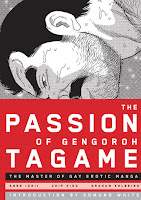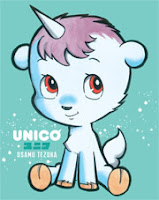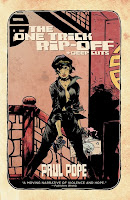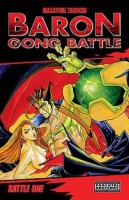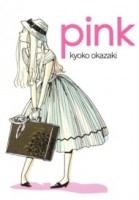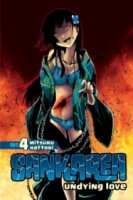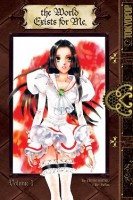My News and Reviews
Last week I posted a review of Hinoki Kino’s manga No. 6, Volume 4. The series has been getting better with each installment and things are starting to get really good. I also wrote a little bit about some of the manga, comics, and fiction releases that for me were particularly Notable in 2013. It’s not exactly a “best of” list, and it isn’t exactly a list of my favorite manga of the year, either. Basically it’s a list of interesting releases from 2013. And speaking of 2013, there’s still time to enter the last manga giveaway of the year! Check out the 4-Koma for You manga giveaway for a chance to win the omnibus edition of Kiyohiko Azuma’s yonkoma manga Azumanga Daioh.
Quick Takes
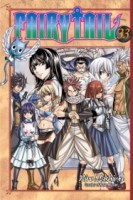 Fairy Tail, Volume 33 by Hiro Mashima. It’s the second day of the Grand Magic Games and it’s still not looking good for the two Fairy Tail teams, although some of their members have surprising victories. Unfortunately, considering their prior string of defeats, it’s not enough to make much of a difference this early in the tournament. There are some great battles and moments of humor in this volume, but I still don’t find the tournament arc to be as compelling as the arcs that came before it. New characters continue to be introduced; I particularly enjoyed the addition of Bacchus, a powerful wizard from the Quatro Cerberus guild. Personality-wise, he can be a bit of a drunken jerk and isn’t always particularly likeable. What caught my interest is that his style of magic is based on Piguaquan, a legitimate Chinese martial art. Not too surprising considering his name, Bacchus combines this with Zui Quan, or “drunken fist.” Granted, it’s the fictionalized version of drunken fist that requires the practitioner to actually be intoxicated, but this is fitting and meshes well with the existing magic systems in Fairy Tail.
Fairy Tail, Volume 33 by Hiro Mashima. It’s the second day of the Grand Magic Games and it’s still not looking good for the two Fairy Tail teams, although some of their members have surprising victories. Unfortunately, considering their prior string of defeats, it’s not enough to make much of a difference this early in the tournament. There are some great battles and moments of humor in this volume, but I still don’t find the tournament arc to be as compelling as the arcs that came before it. New characters continue to be introduced; I particularly enjoyed the addition of Bacchus, a powerful wizard from the Quatro Cerberus guild. Personality-wise, he can be a bit of a drunken jerk and isn’t always particularly likeable. What caught my interest is that his style of magic is based on Piguaquan, a legitimate Chinese martial art. Not too surprising considering his name, Bacchus combines this with Zui Quan, or “drunken fist.” Granted, it’s the fictionalized version of drunken fist that requires the practitioner to actually be intoxicated, but this is fitting and meshes well with the existing magic systems in Fairy Tail.
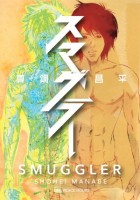 Smuggler by Shohei Manabe. Originally released in English by Tokyopop, Smuggler is now available in a new edition from One Peace Books. I missed the manga the first time around, and since it also received a live-action film adaptation, I was particularly curious to read it. Kinuta is a failed actor who has accumulated a fair amount of debt. In order to pay back what he owes he has been smuggling and illegally dumping cargo outside of Tokyo. What he didn’t initially realize was that he was helping to transport and dispose of dead bodies for the yakuza. And now that he does know, Kinuta owes the mob his life as well as his money. When a job goes terribly wrong and an extraordinarily dangerous assassin escapes on his watch, Kinuta suddenly finds himself pulled even deeper into Japan’s underworld. Smuggler is a dark and violent manga, quickly paced, and unrelenting. It’s definitely not for the faint of heart. Smuggler held my interest, and there were some marvelously gut-wrenching scenes, but in the end I can’t say that the manga left much of a lasting impression on me.
Smuggler by Shohei Manabe. Originally released in English by Tokyopop, Smuggler is now available in a new edition from One Peace Books. I missed the manga the first time around, and since it also received a live-action film adaptation, I was particularly curious to read it. Kinuta is a failed actor who has accumulated a fair amount of debt. In order to pay back what he owes he has been smuggling and illegally dumping cargo outside of Tokyo. What he didn’t initially realize was that he was helping to transport and dispose of dead bodies for the yakuza. And now that he does know, Kinuta owes the mob his life as well as his money. When a job goes terribly wrong and an extraordinarily dangerous assassin escapes on his watch, Kinuta suddenly finds himself pulled even deeper into Japan’s underworld. Smuggler is a dark and violent manga, quickly paced, and unrelenting. It’s definitely not for the faint of heart. Smuggler held my interest, and there were some marvelously gut-wrenching scenes, but in the end I can’t say that the manga left much of a lasting impression on me.
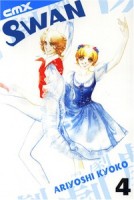 Swan, Volumes 4-9 by Kyoko Ariyoshi. I am still completely in love with Swan and am astounded that it has taken me this long to actually get around to reading it. The series is incredibly well done—it’s just so intense and passionate, not to mention beautifully drawn. I’m also learning a bit more about ballet and its history as I read, which I count as a bonus. There are quite a few themes being addressed in these particular volumes. One of the themes that is especially prominent deals with sacrifice and what people are willing to give up in order to pursue what the truly love. It’s not always an easy decision. As someone who was deeply involved in the performing arts (in my case music, not dance), it’s a conflict with which I can personally identify. The characters in Swan all have to struggle to find the balance between their lives as dancers and their relationships with other people. Matters of love and romance complicate things greatly, but they also serve as a source of inspiration for creative expression. Swan piles on the drama and it’s fantastic.
Swan, Volumes 4-9 by Kyoko Ariyoshi. I am still completely in love with Swan and am astounded that it has taken me this long to actually get around to reading it. The series is incredibly well done—it’s just so intense and passionate, not to mention beautifully drawn. I’m also learning a bit more about ballet and its history as I read, which I count as a bonus. There are quite a few themes being addressed in these particular volumes. One of the themes that is especially prominent deals with sacrifice and what people are willing to give up in order to pursue what the truly love. It’s not always an easy decision. As someone who was deeply involved in the performing arts (in my case music, not dance), it’s a conflict with which I can personally identify. The characters in Swan all have to struggle to find the balance between their lives as dancers and their relationships with other people. Matters of love and romance complicate things greatly, but they also serve as a source of inspiration for creative expression. Swan piles on the drama and it’s fantastic.
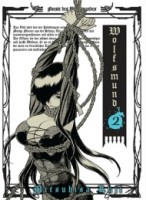 Wolfsmund, Volume 2 by Mitsuhisa Kuji. While the first volume of Wolfsmund was violent and intense, the second volume is arguably even more so. In response to the rebellion gaining strength and numbers, the questioning of those trying to cross through the Wolf’s Maw at Sankt Gotthard Pass has become even more invasive and thorough. The gate’s overseer Wolfram—who is almost always shown with a terrifyingly pleasant smile on his face—seems to take particular delight in this. In order to get the information he needs, he’s more than willing to order the death or torture of a person no matter who they are. Cruelty isn’t limited to Wolfram. Even the rebellion’s heroes are capable of terrible deeds. I am a fan of dark historical manga, so Wolfsmund is right up my alley. Wolfsmund is definitely for mature readers. Considering its brutal nature (women and girls in particular suffer greatly in this volume) it’s not a series that I would recommend to just anyone. That being said, I am looking forward to the next volume.
Wolfsmund, Volume 2 by Mitsuhisa Kuji. While the first volume of Wolfsmund was violent and intense, the second volume is arguably even more so. In response to the rebellion gaining strength and numbers, the questioning of those trying to cross through the Wolf’s Maw at Sankt Gotthard Pass has become even more invasive and thorough. The gate’s overseer Wolfram—who is almost always shown with a terrifyingly pleasant smile on his face—seems to take particular delight in this. In order to get the information he needs, he’s more than willing to order the death or torture of a person no matter who they are. Cruelty isn’t limited to Wolfram. Even the rebellion’s heroes are capable of terrible deeds. I am a fan of dark historical manga, so Wolfsmund is right up my alley. Wolfsmund is definitely for mature readers. Considering its brutal nature (women and girls in particular suffer greatly in this volume) it’s not a series that I would recommend to just anyone. That being said, I am looking forward to the next volume.


